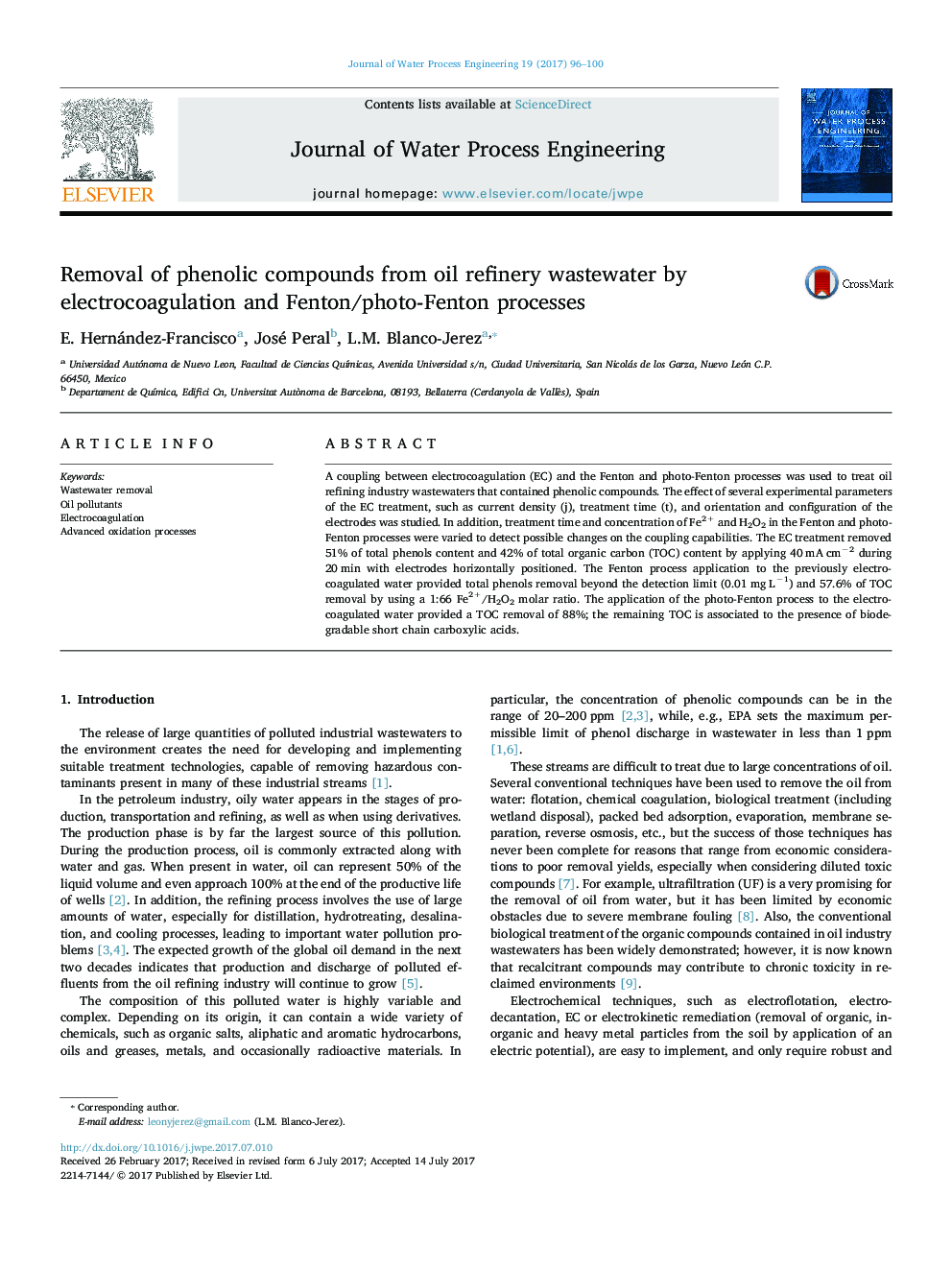| Article ID | Journal | Published Year | Pages | File Type |
|---|---|---|---|---|
| 4909973 | Journal of Water Process Engineering | 2017 | 5 Pages |
Abstract
A coupling between electrocoagulation (EC) and the Fenton and photo-Fenton processes was used to treat oil refining industry wastewaters that contained phenolic compounds. The effect of several experimental parameters of the EC treatment, such as current density (j), treatment time (t), and orientation and configuration of the electrodes was studied. In addition, treatment time and concentration of Fe2+ and H2O2 in the Fenton and photo-Fenton processes were varied to detect possible changes on the coupling capabilities. The EC treatment removed 51% of total phenols content and 42% of total organic carbon (TOC) content by applying 40 mA cmâ2 during 20 min with electrodes horizontally positioned. The Fenton process application to the previously electrocoagulated water provided total phenols removal beyond the detection limit (0.01 mg Lâ1) and 57.6% of TOC removal by using a 1:66 Fe2+/H2O2 molar ratio. The application of the photo-Fenton process to the electrocoagulated water provided a TOC removal of 88%; the remaining TOC is associated to the presence of biodegradable short chain carboxylic acids.
Related Topics
Physical Sciences and Engineering
Chemical Engineering
Chemical Engineering (General)
Authors
E. Hernández-Francisco, José Peral, L.M. Blanco-Jerez,
